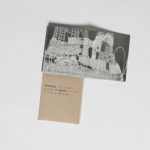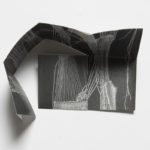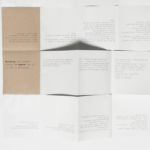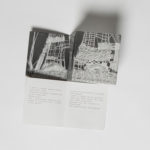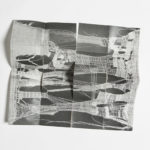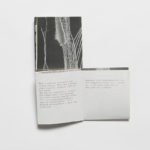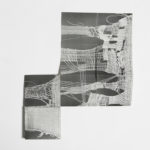Growing a weave as if it were a rhizome
publication, 2018 NL
”Rather than narrativize history and culture, the rhizome presents history and culture as a map or wide array of attractions and influences with no specific origin or genesis. For a rhizome has no beginning or end; it is always in the middle, between, interbeing, intermezzo.” p 25, A thousand plateaus – Deleuze & Guatteri
In botany, a rhizome (/ˈraɪzoʊm/, from Ancient Greek: rhízōma “mass of roots”) is a modified subterranean plant stem that sends out roots and shoots from its nodes. Examples of rhizomes; bamboo, strawberries, nettles, willow, mint, etc. These plants have the ability to spread without sprouting from seeds only. Whenever a piece of the root or branch is cut it has the ability to grow further.
Based on the botanical rhizome, philosophers Gilles Deleuze and Félix Guatteri developed a philosophical model to describe theory and research that allows multiple, non-hierarchical entry and exit points in data representation and interpretation. Opposed to an arborescent (hierarchic, tree-like) conception of knowledge, which works with dualist categories, binary choices and linear connections, the rhizome model works with planar and trans-species connections.
While reading ‘A thousand plateaus’ I wondered if I could approach weaving as if it were a rhizome; without a linear predestine pattern, without a beginning or end, creating infinite entries and possibilities, creating an anti-structure, growing a weave instead of planning a weave. In attempt to escape the predictable and visualise ‘rhizomatic’ research.
While weaving I kept a record of my thoughts and created a publication which can be read in multiple ways, opposed to the linear direction of traditional books.





